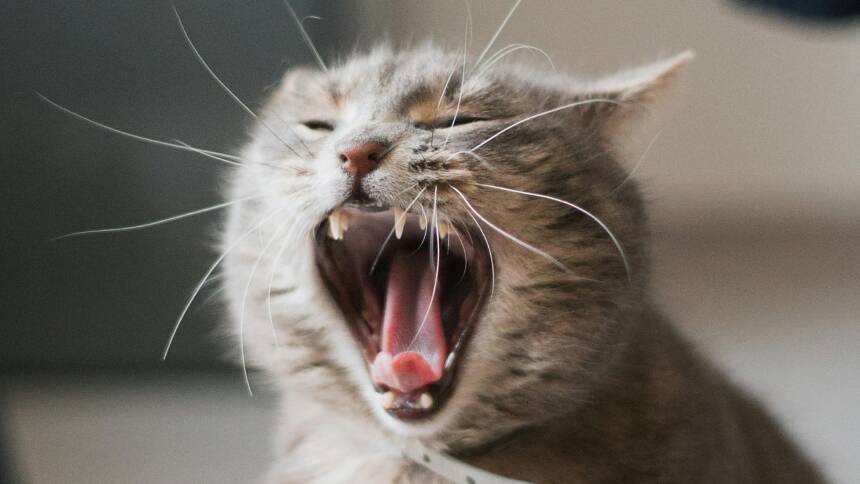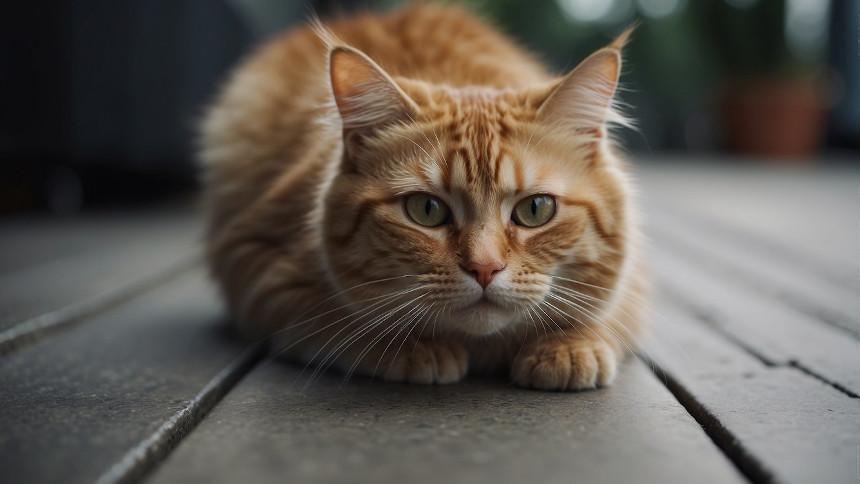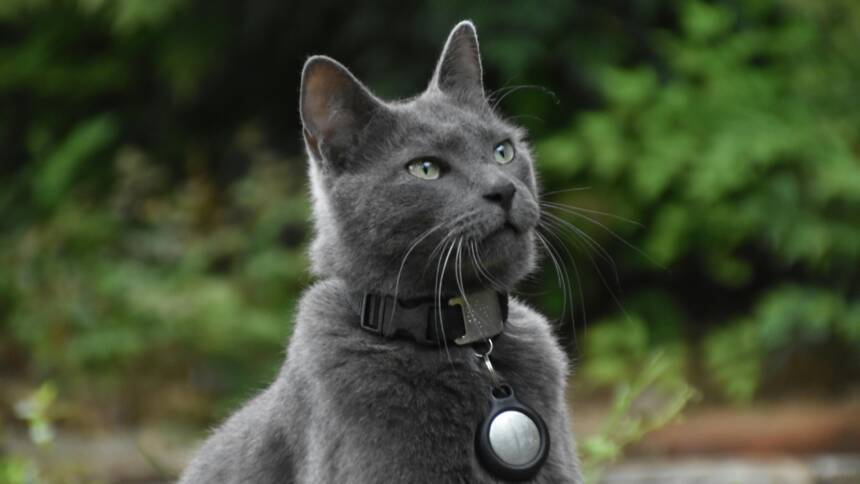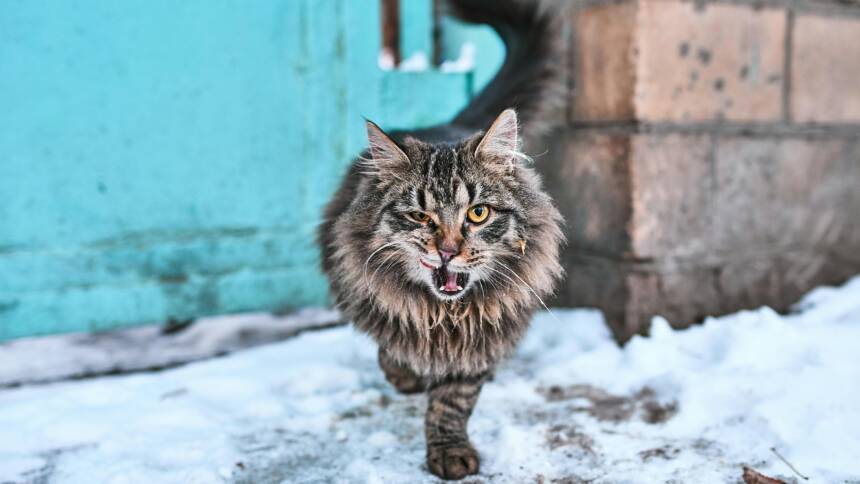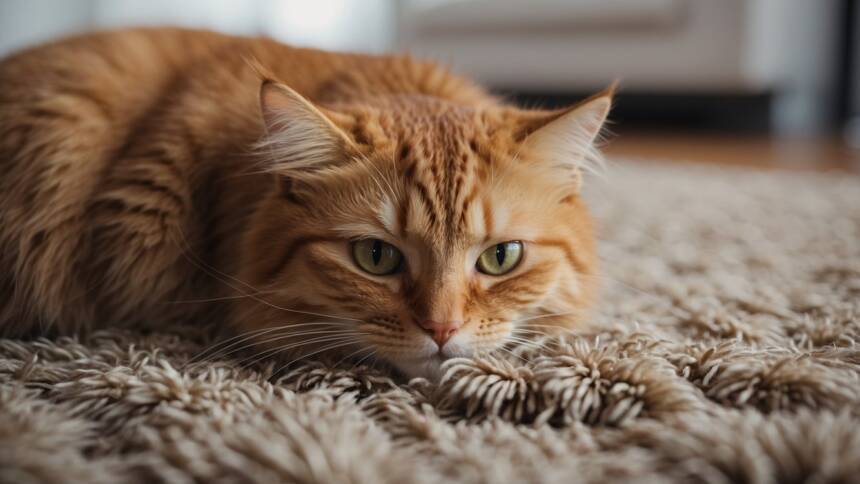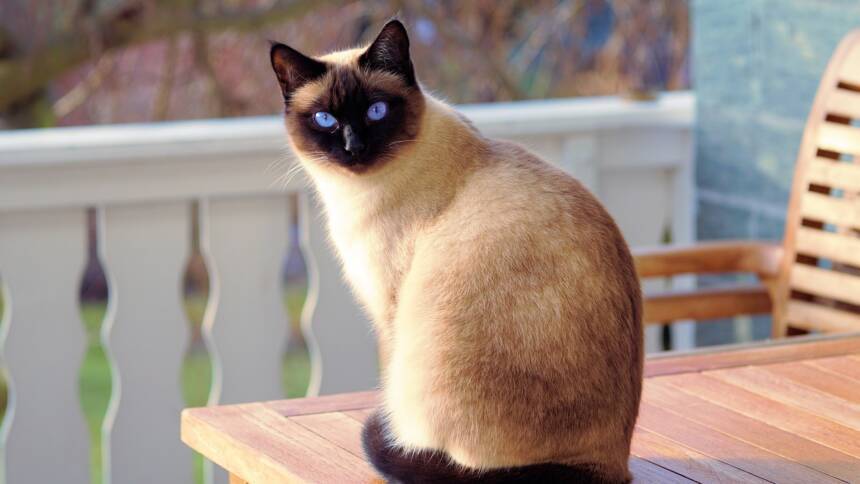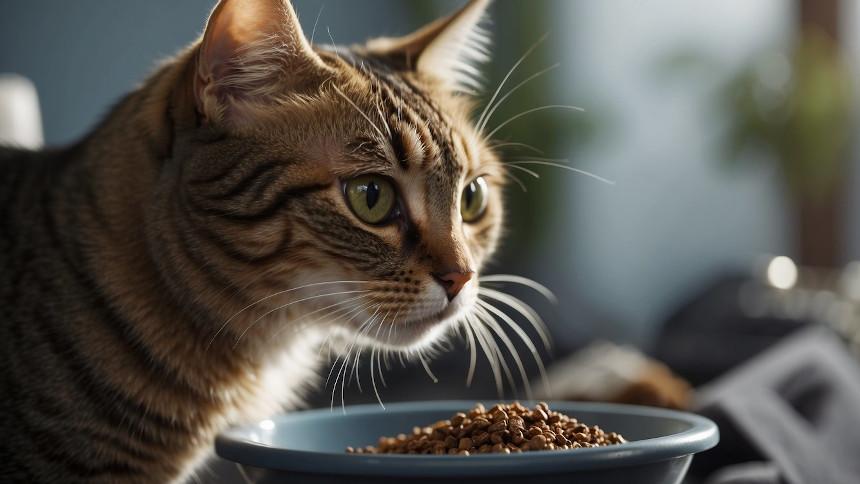Overgrooming in cats is a compulsive behavior that manifests as an excessive amount of grooming, beyond the normal feline habit of maintaining cleanliness and skin health. This condition often leads to hair loss and potential skin sores, indicative of the pet’s stress or underlying health issues. It is characterized by incessant licking, chewing, or pulling at the fur, actions that, while normal in moderation, signal behavioral concerns when overdone.
While grooming accounts for a substantial part of a cat’s daily routine, overgrooming constitutes a significant deviation from normal behavior. Stress is a common trigger for this compulsive grooming; it may arise from changes in the cat’s environment, such as moving to a new home, the arrival of a new pet, or any disruption to their routine. Additionally, medical issues, including allergies, skin conditions, or internal illnesses, can prompt a cat to overgroom.
The phenomenon of a cat losing weight concurrently with overgrooming should raise immediate concerns, as it may indicate more severe health problems. A loss of appetite or a decrease in grooming is a sign that a cat is not feeling well. If these behaviors are observed, seeking veterinary advice is critical to address potential issues varying from dental ailments to diseases affecting internal organs, which could manifest through changes in grooming habits and weight.
Recognizing Overgrooming
Overgrooming in cats is a concerning behavior that often manifests through observable physical changes and distinct patterns of behavior. Recognizing these early signs can lead to quicker intervention and treatment.
Signs and Symptoms
Cats that overgroom may exhibit physical signs such as:
- Alopecia: Hair loss resulting in thinning fur or bald patches.
- Skin Irritation: Redness, sores, or lesions on the skin due to excessive licking.
These symptoms can be attributed to a variety of causes, including stress, allergies, or parasites like fleas. Any indications of itching or discomfort should serve as alerts to cat owners.
Behavioral Indicators
Behaviorally, cats may display:
- Excessive Licking: Persistent grooming beyond their usual routine.
- Chewing on Skin: A cat may chew on its skin when grooming, which goes beyond normal behavior and may lead to injuries.
While grooming is a normal routine for felines, overgrooming driven by anxiety or stress is typically indicated by these intensified grooming actions. Observing your cat’s grooming habits for any escalation or change in patterns is critical in identifying overgrooming.
Potential Causes of Overgrooming
Overgrooming in cats can stem from a complicated interplay of medical issues and psychogenic factors. It requires careful assessment to understand the underlying cause.
Medical Conditions
Medical conditions that lead to overgrooming typically involve pain, discomfort, or itchiness that the cat tries to alleviate through excessive grooming. Notable medical issues include:
- Allergies: Cats can develop allergies to various things, including food, environmental triggers such as pollen, and parasites like fleas. These allergies often cause itching, leading to overgrooming.
- Parasites: External parasites, notably fleas and mites, can cause intense irritation, resulting in overgrooming.
- Skin Conditions: Cats might overgroom areas affected by bacterial infections, fungal infections like ringworm, or inflammation due to various dermatological issues.
- Painful Conditions: Illnesses such as arthritis, dental disease, or cancer can manifest as overgrooming behavior. Cats may lick at the painful area or more generally if they cannot reach the source of the pain.
- Systemic Illnesses: Diseases such as hyperthyroidism, diabetes, or those causing general inflammation can have the side effect of excessive grooming.
Psychogenic Factors
When medical conditions have been ruled out, psychogenic factors might be the culprit.
- Stress: Changes in the environment, such as moving, new pets, or household tensions, can significantly increase a cat’s stress levels, leading to compulsive behaviors like overgrooming.
- Psychogenic Alopecia: This is a condition where cats groom excessively due to psychological reasons rather than physical ailments, often as a response to stress or anxiety.
A veterinarian is essential for diagnosing the precise cause of overgrooming and prescribing appropriate treatment, which may include medication to address the underlying issue or behavioral therapies for stress-related causes.
Understanding Weight Loss in Cats
When a cat is losing weight, it can be a sign of underlying health issues or dietary imbalances. A veterinarian’s evaluation is critical to determine the cause and to develop a suitable treatment plan.
Common Health Issues
Weight loss in cats is often attributed to a range of health problems. As cats age, they may face conditions such as:
- Dental Problems: Painful teeth or gums can lead to decreased appetite and weight loss.
- Arthritis: Joint pain may prevent a cat from reaching its food bowl, diminishing its normal eating habits.
- Skin Conditions: These can cause overgrooming, leading to stress and weight loss.
- Internal Illnesses: Diseases, such as diabetes, cancer, and hyperthyroidism, often result in rapid weight loss.
- Liver Disease and Pancreatitis: These conditions can reduce a cat’s appetite significantly.
- Stress and Anxiety: Changes in their environment or the introduction of new pets can disrupt a cat’s routine, affecting its eating behavior.
Prompt recognition and diagnosis are paramount. Early veterinary intervention can mitigate the effects of these disorders and may improve the prognosis.
Diet and Nutrition
The role of diet and nutrition is crucial in maintaining a cat’s weight:
- Inappropriate Diet: A diet that does not meet a cat’s nutritional needs can lead to weight loss.
- Sudden Diet Changes: Rapid changes to a cat’s diet may impact their appetite and metabolism.
- Poor-Quality Cat Food: Foods lacking in essential nutrients, particularly protein, can result in weight loss.
- Overfeeding: Ironically, poor eating can also be the result of obesity-related health issues from overfeeding.
It is essential for a cat’s diet to be well-balanced, containing the right amount of high-quality protein and essential nutrients. Cat owners should consult a veterinarian to assess their cat’s dietary needs, especially if the cat is experiencing changes in weight.
Diagnostic Procedures
When a cat presents symptoms of excessive grooming and weight loss, specific diagnostic procedures are essential to identify underlying medical conditions.
Veterinary Assessment
A thorough veterinary assessment is the initial step in determining the cause of a cat’s overgrooming and weight loss. Veterinarians will begin with a detailed history, examining changes in the cat’s behavior, appetite, and activity levels. They look for any signs of skin infections or irritations that might instigate overgrooming. The physical examination includes checking for signs of systemic diseases such as hyperthyroidism, which can cause heightened grooming behavior.
Laboratory Tests
Following the initial assessment, a series of laboratory tests are often necessary. An essential part of the workup includes urine testing to evaluate the cat’s kidney function and to look for any signs of infection or crystals. A complete blood count (CBC) and biochemistry profile can help screen for a wide range of medical conditions, including hyperthyroidism and diabetes, which might contribute to weight loss and behavioral changes.
Allergy testing may be recommended if the veterinarian suspects that environmental allergens such as dust or pollens are triggering excessive grooming. In cases where skin infections are apparent or suspected, a culture or biopsy might be necessary. A consultation with a veterinary dermatologist could be beneficial for cases with persistent skin issues.
Treatment Options
When addressing cat overgrooming and weight loss, the treatment options generally fall into two main categories: medical treatments to address physical health issues and behavioral therapies to manage psychological factors.
Medical Treatments
Infections and Parasites: If a cat is diagnosed with skin infections, fungal conditions like ringworm, or infestations by parasites such as fleas, lice, or mites, a vet may prescribe relevant medications. These can include:
- Antifungals: For fungal infections like ringworm.
- Antiparasitics: Such as on-spot treatments or oral medications for fleas, lice, or mites.
Allergies and Itching: Cats with allergies that lead to itchy skin might require:
- Antihistamines: To alleviate itching caused by allergic reactions.
- Corticosteroids: For more severe inflammatory reactions, if recommended by the vet.
Pain and Discomfort: Medications to manage pain can be prescribed if physical discomfort is causing overgrooming.
- Pain Relievers: Always as prescribed by the vet to ensure they are safe for the cat.
Underlying Health Issues: Sometimes overgrooming and weight loss are signs of other health problems which may need specific treatments such as:
- Hormonal Supplements: If an endocrine disorder is present.
- Appetite Stimulants: To support weight gain and nutritional intake if necessary.
Behavioral Therapies
Anxiety and Stress: Overgrooming due to anxiety can be treated using behavioral modification techniques and environmental changes, which may include:
- Anti-Anxiety Medication: On vet’s consultation and prescription.
- Pheromone Products: Diffusers or sprays to help reduce anxiety.
Environmental Enrichment: To reduce boredom or stress, it’s important to enrich the cat’s environment with:
- Play Therapy: Regular interactive play sessions.
Consultation with a Behaviorist: In some cases, a professional behaviorist can provide:
- Custom Behavioral Plans: Tailored strategies to reduce stress-related grooming behaviors.
By applying the appropriate combination of medical treatments and behavioral therapies, one can effectively manage a cat’s overgrooming and accompanying symptoms, such as weight loss. Each cat’s situation is unique, and any treatment should be guided by a veterinarian’s expertise.
Prevention and Management
Cats may over-groom and lose weight due to various stressors and environmental factors. Addressing these issues promptly can mitigate or prevent these behaviors. Ensuring a stimulating environment and stable routine plays a critical role in their overall well-being.
Environmental Enrichment
Environmental enrichment is crucial for reducing stress and providing adequate stimulation. A well-enriched environment includes:
- Safe climbing spaces: Cat trees or wall shelves satisfy a cat’s instinct to perch and survey their territory.
- Multiple litter boxes: Placing several litter boxes around the home helps avoid territorial stress and maintains cleanliness.
- Interactive toys: Toys that mimic prey behavior can keep a cat engaged and reduce boredom-induced over-grooming.
Cats thrive in an environment that challenges their natural abilities while providing a sense of safety.
Routine and Lifestyle Changes
A structured routine and healthy lifestyle can significantly impact a cat’s inclination to over-groom. Key considerations include:
- Consistent feeding times: Adhering to a regular feeding schedule provides structure and reduces anxiety.
- Quality diet: A balanced diet supports skin health and may reduce the urge to groom excessively due to skin irritations or dietary allergies.
- Stress reduction: Minimizing changes in the household and slowly introducing new pets or people can ease a cat’s stress levels.
By managing a cat’s environment and routine, owners can help alleviate behavioral issues and promote healthier self-grooming habits.
Supporting Cat Owners
When cats exhibit over grooming or unexpected weight loss, pet parents often confront a mixture of concern and the need for reliable information. To support these owners, two critical avenues are vet-approved guidance and access to thorough product reviews alongside exclusive deals.
Vet-Approved Guidance
Behavior and Treatment: The first step for any owner noticing signs of over grooming or weight loss is to seek vet-approved guidance. A veterinarian can diagnose if these behaviors are due to stress, environmental stressors, or a medical condition such as dental pain, arthritis, skin conditions, allergies, or chronic diseases like kidney issues. Diet and age can also play significant roles, which a vet can address with tailored advice for treatment and care.
- Age-related Concerns: As cats age, they may naturally display changes in grooming habits and weight. A vet can help distinguish between normal aging and signs of underlying issues.
- Behavioral Stress: Stress and anxiety can lead to over grooming. Identifying stressors in a cat’s environment is crucial, followed by implementing a vet-approved plan to reduce anxiety.
Product Reviews and Exclusive Deals
Pet parents can make informed decisions about products that may alleviate stress or assist with dietary needs by consulting product reviews and looking for exclusive deals.
- Diet Management: Research and select food products that support a healthy weight and are approved by veterinarians.
- Stress Relief: Products like pheromone diffusers or toys that promote environmental enrichment can reduce anxiety and over grooming due to stress.
By integrating vet-approved advice with well-chosen products, pet owners can confidently address behaviors like over grooming and weight changes in their cats.

